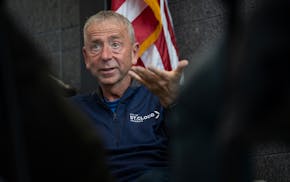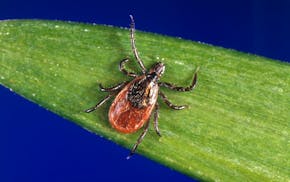Sept. 11, 2001, began as a beautiful sunny day in Washington, D.C. I was then a U.S. senator from Minnesota, walking to my office in the Russell Senate Office Building, just across the street from the U.S. Capitol. I stopped in a basement coffee shop at 8:50 a.m.
To my surprise, the line of fellow caffeine consumers was bunched in front of, not the coffee, but a television set.
"What happened?" I asked. "A plane just hit one of the World Trade towers," was the reply. I skipped the coffee and ran up to my office.
My chief of staff was peering at her TV. "What could have gone wrong?" we asked each other. The screen showed a clear day in New York City. How could a pilot have missed seeing Manhattan's tallest building? Maybe a heart attack?
Suddenly, right before our eyes, another airplane crashed into the second tower. Horror gripped my chest. That was no accident.
Confusion reigned in our building. What was happening? Who was doing whatever it was? What should we do about it?
Sen. Ted Kennedy's office was just around the corner from mine. As it happened, First Lady Laura Bush was visiting inside, before going with Ted to a Senate hearing. We heard from her Secret Service agents that they intended to proceed with the hearing.
Then word came that yet another plane had struck the Pentagon. Mrs. Bush was being evacuated. A minute later, a loudspeaker instructed all of us to leave the building.
Eight months into my term, the Senate had provided no evacuation instructions. So I told my staff to go home. And I walked three blocks to the hotel where I was living temporarily.
In the lobby, I encountered the general manager, who asked if I would like to go on the roof with her. It was eerily quiet up there, with not an airplane or helicopter in the clear blue sky, only by a large plume of black smoke coming from a corner of the Pentagon.
Suddenly, two Air Force fighter jets came streaking down the Mall and over the dome of the Capitol. They were en route to intercept a fourth passenger plane that was heading back toward Washington.
In fact, that flight had already crashed well short of its target, brought down by the heroic efforts of its passengers, led by Minnesota native, Thomas Burnett Jr.
The Air Force later claimed that its jets could have stopped the hijacked plane from crashing into its likely target, the Capitol. But the actual timeline documented by the 9/11 Commission showed they would have been too late. The reason: When scrambled, the jets had flown east, supposing that an enemy attack would be coming from over the Atlantic Ocean. They were 150 miles from Washington before the mission commander realized their whereabouts. "I don't care how many windows you break," he was recorded saying. "Damn it. Push them back!"
I returned to my hotel room and, like almost everyone else, tuned in the best source of real-time information: CNN. Local telephone lines were hopelessly jammed. For eight terrifying hours my military liaison (I was on the Senate Armed Services Committee) was unable to contact his wife, who worked inside the Pentagon near the blast site.
Yet, somehow, my enterprising Deputy Chief of Staff Katie Sieben (who now heads our state's Public Utilities Commission), found out that a group of senators was gathering nearby in the headquarters of the Capitol Police.
I joined about 30 of my colleagues there, and we tried unsuccessfully to phone our Senate majority and minority leaders, who, along with the speaker of the house, had been taken to a hidden location for safety. After an hour we finally secured a connection, only to lose it when someone pushed the wrong telephone button. It took another 20 minutes to reconnect us.
We agreed that we wanted to show the world our nation's political leaders were still alive and our government still intact, despite the terrorists' assault. So that evening, more than 100 senators and representatives, Republicans and Democrats, stood together on the steps of the U.S. Capitol for a service, which concluded with our singing "God Bless America."
It was a supremely powerful moment of unity and resolve. It took that day of horror to remind us we are all Americans, whose lives are interconnected, and who share a common cause.
I pray we may find that national unity again, without the terror.
Mark Dayton was governor of Minnesota, 2011-19, and a member of the U.S. Senate, 2001-07.

Kudos to St. Cloud's longtime mayor
Readers Write: Ethnic studies curriculum, public notice laws, student protests


